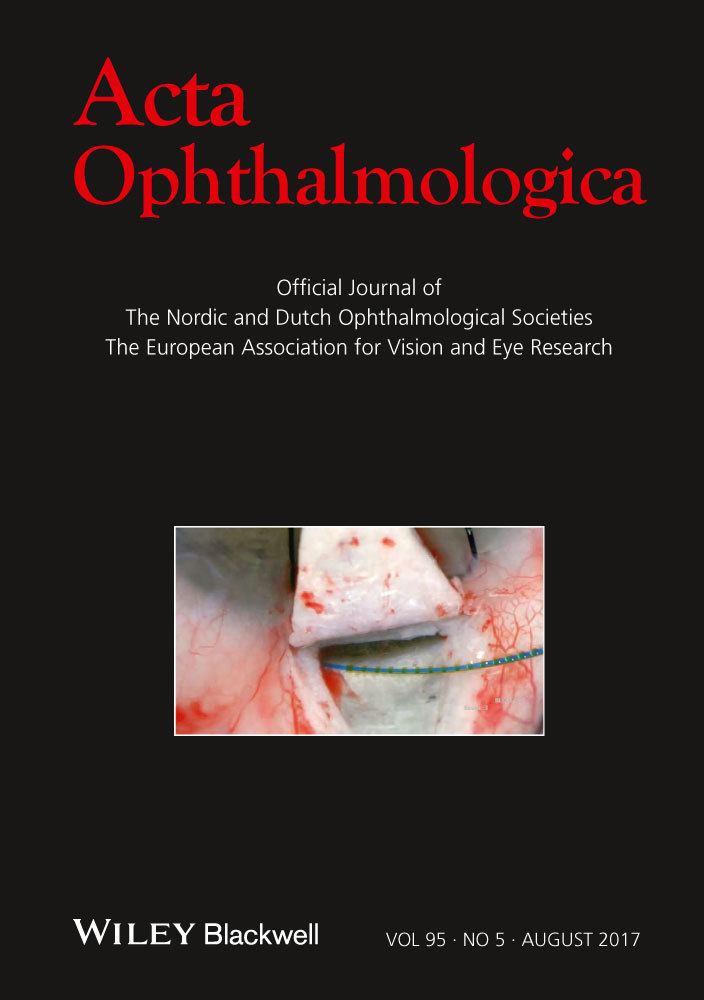Switching to aflibercept in patients with neovascular age-related macular degeneration not responding to bevacizumab: a pilot study
Anti-vascular endothelial growth factor (VEGF) therapy has become the mainstay of neovascular age-related macular degeneration (nAMD) treatment and has substantially improved visual prognosis. The first-line anti-VEGF agent used in the Netherlands is bevacizumab because of its superior cost-effectiveness compared to ranibizumab and aflibercept (Nederlands Oogheelkundig Gezelschap 2014). Even though bevacizumab is generally effective, approximately 10% of patients are non-responders. The effectiveness and working mechanism of bevacizumab are comparable to those of ranibizumab, both being VEGF-A antibodies (CATT Research Group et al. 2011). However, the therapeutic mechanism of aflibercept is slightly different, which functions as a decoy receptor for VEGF-A, VEGF-B and placental growth factor. Therefore, aflibercept seems like a more promising alternative than ranibizumab in case of non-response to bevacizumab. Although aflibercept is an effective treatment for nAMD (Heier et al. 2012), its role as a secondary treatment option requires further investigation. Here, we report the treatment response to aflibercept in nAMD patients who did not respond to bevacizumab treatment.
This prospective, single-arm, open-label, clinical trial was approved by the local ethical committee (NL44122.091.13) and was registered at the Dutch trial register (NTR4188). We included 10 eyes of nine patients (Table 1) who were non-responder to bevacizumab. Inclusion criteria were inadequate response to bevacizumab treatment defined as a persistent central retinal thickness (CRT) of ≥300 μm on optical coherence tomography (OCT); having received at least three bevacizumab injections within 1 year before inclusion in this study; active nAMD as seen on fluorescein angiography and OCT; maximally 2 years since start of bevacizumab treatment; 1–3 months since the last bevacizumab injection; and best-corrected visual acuity (BCVA) at baseline between 20/25 and 20/320. Patients were excluded if they had signs of subretinal fibrosis, scarring or geographic atrophy involving the center of the macula; pigment epithelial detachment with a height of ≥150 μm; or any other retinal diseases.
| n = 10 eyes of 9 patients | |
|---|---|
| Male, n (%) | 4 (44%) |
| Age, median (range) | 75 (55-87) |
| Eye included, n (%) | |
| Right eye | 4 (40%) |
| Left eye | 6 (60%) |
| Nr of bevacizumab injections, median (range) | 6 (3-11) |
| CRT at baseline in μm, mean (SD) | 540 (110) |
| BCVA at baseline in letters, mean (SD) | 57.6 (18.7) |
- CRT = central retinal thickness; BCVA = bestcorrected visual acuity.
Aflibercept was administered as three consecutive monthly injections at a dose of 2 mg (0.05 ml). At every visit, we measured CRT on OCT (Spectralis HRA+OCT, Heidelberg Engineering) and ETDRS BCVA. One month after the last injection response was evaluated. All statistical comparisons were made in spss using a paired t-test.
Central retinal thickness (CRT) decreased significantly after switching to aflibercept with a mean of 102 ± 96 μm after 3 months (p = 0.008) (Fig. 1). The largest decrease was seen after 1 month (90 ± 83 μm, p = 0.007). Best-corrected visual acuity (BCVA) increased correspondingly with 6.7 ± 11.4 ETDRS letters, however, this was not significant (p = 0.096). The change in CRT was substantial in seven eyes, with a decrease of >50 μm. In seven of 10 eyes there was a functionally relevant improvement of >5 ETDRS letters.

In this study, there was a clear anatomical benefit of switching to aflibercept. Most eyes also improved functionally, however not significantly, likely due to a lack of power. The 3-month BCVA changes we found were good compared to other prospective studies on switching to aflibercept after non-response to previous anti-VEGF treatment, where it ranged between 0 and +7 letters after 6 months (3 month data not available for most studies) (Lazzeri et al. 2015). In these previous studies, anatomical response varied between -127 and -15 μm; however, most find CRT changes of <50 μm. An explanation for our good results could be that patients in our study were switched relatively early, sometimes as soon as after 3 months of bevacizumab treatment, leaving more room for improvement. In conclusion, this study provides additional evidence that switching to aflibercept may be beneficial after non-response to bevacizumab, resulting is anatomical as well as functional improvement.




